How To Draw Tim Burton Style
Tim Burton Inspired Fine art Projection
Hullo, I am Creative person Lillian Gray. In today's lesson, we are going to create a self-portrait inspired by Tim Burton's fine art. Tim Burton is an American filmmaker, animator, producer and artist. He is generally celebrated equally a picture show director and illustrator. His accolades include nominations for several Academy Awards. He is the winner of three BAFTA Awards equally well as an Emmy Accolade and a Golden Globe Accolade.
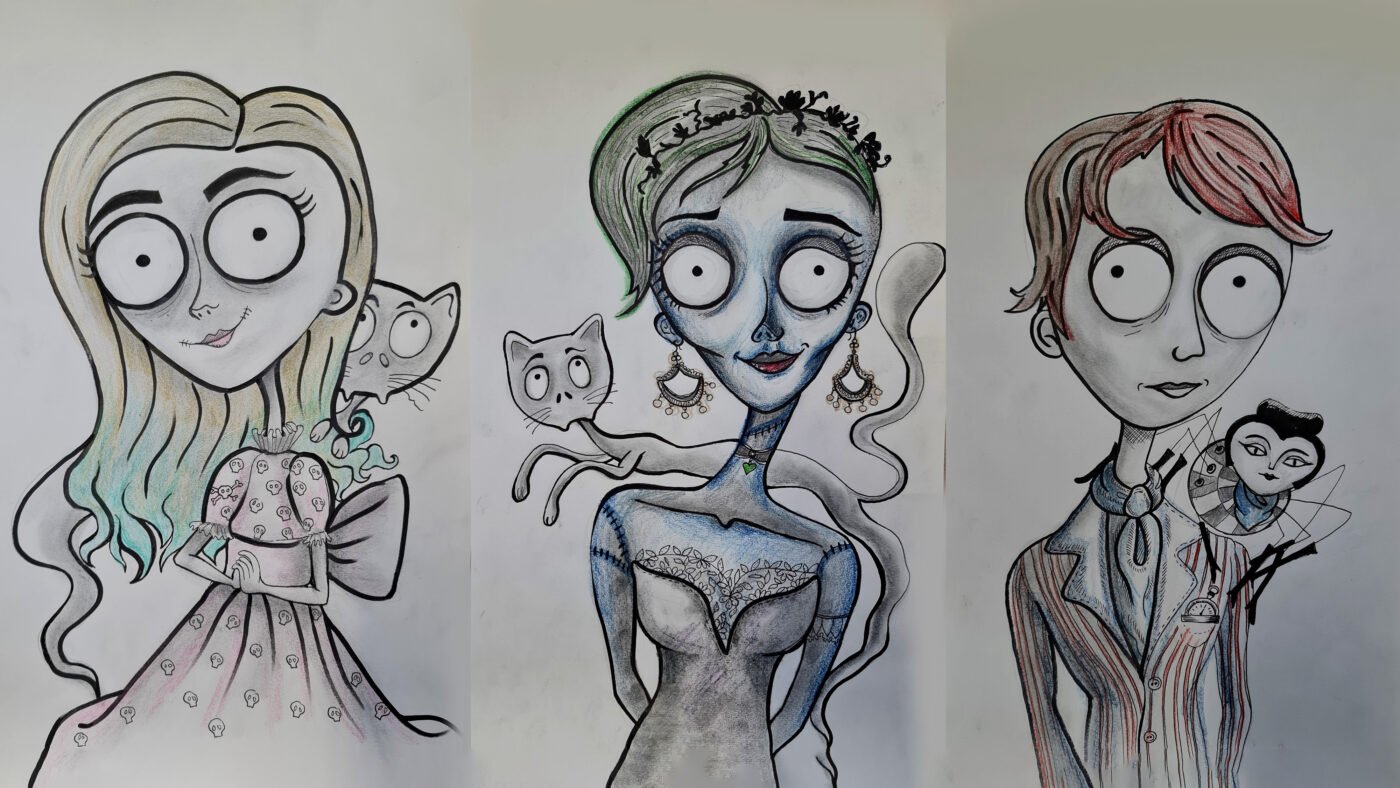
The start of Tim Burton's art career
Tim Burton was built-in in California in 1958. As a young teenager, he would make short films in his lawn. He made his offset stop-move animation at the mere age of 13. Cease motion is an animated filmmaking technique where objects are moved in pocket-sized increments. Each tiny movement is photographed. Once all the photographed frames are played chop-chop, it creates the illusion of movement. Whatever kind of object can be animated using this style.
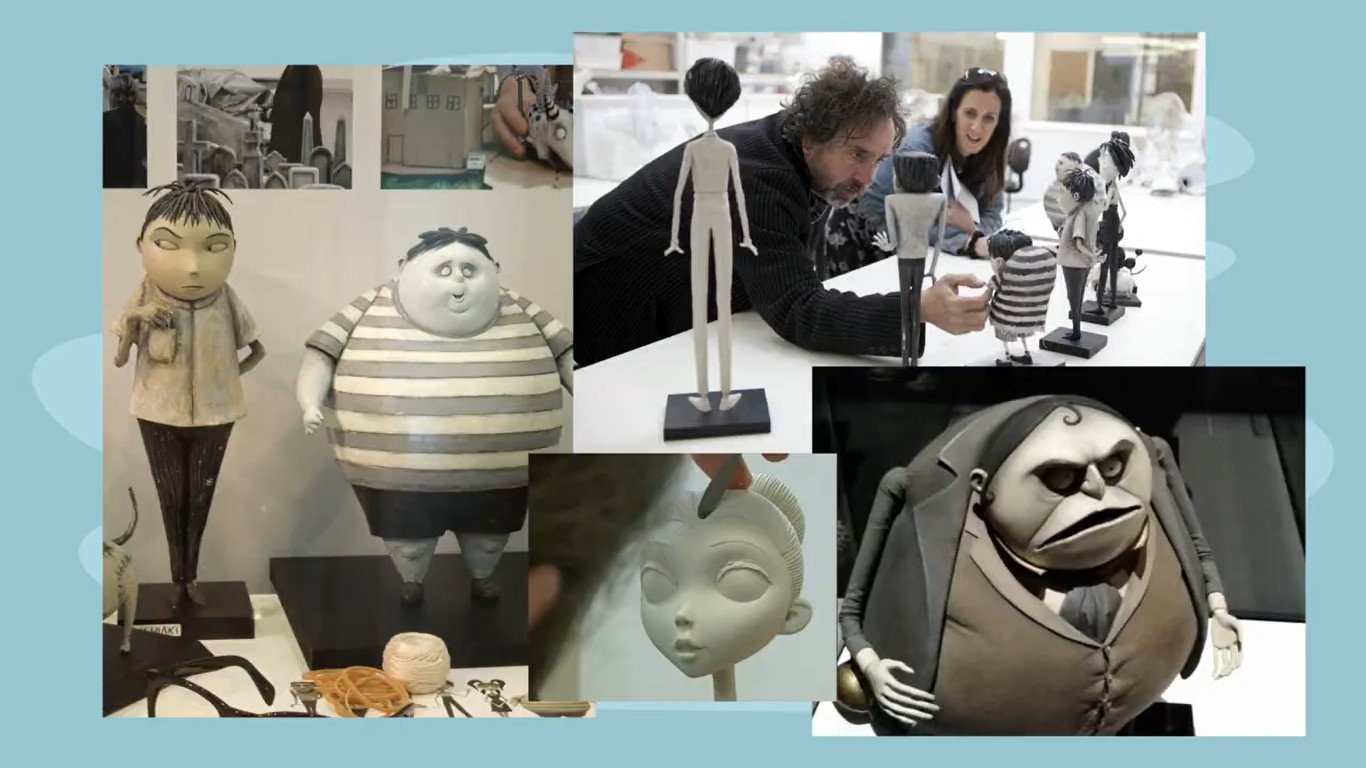
Burton wasn't a particularly good student at schoolhouse. He was introspective and struggled to communicate with other teenagers. He establish joy in his art and movies. His hereafter work would be heavily influenced by the works of such childhood heroes as Dr Seuss and Roald Dahl.

Afterward he finished Loftier Schoolhouse Tim Burton attended the California Found of the Arts, known as CalArts in California. In that location he studied graphic symbol animation and created his own contained short films. His short films attracted the attention of Walt Disney Productions. Disney offered Burton a job as animator, storyboard artist, graphic designer, fine art director and Concept Creative person.
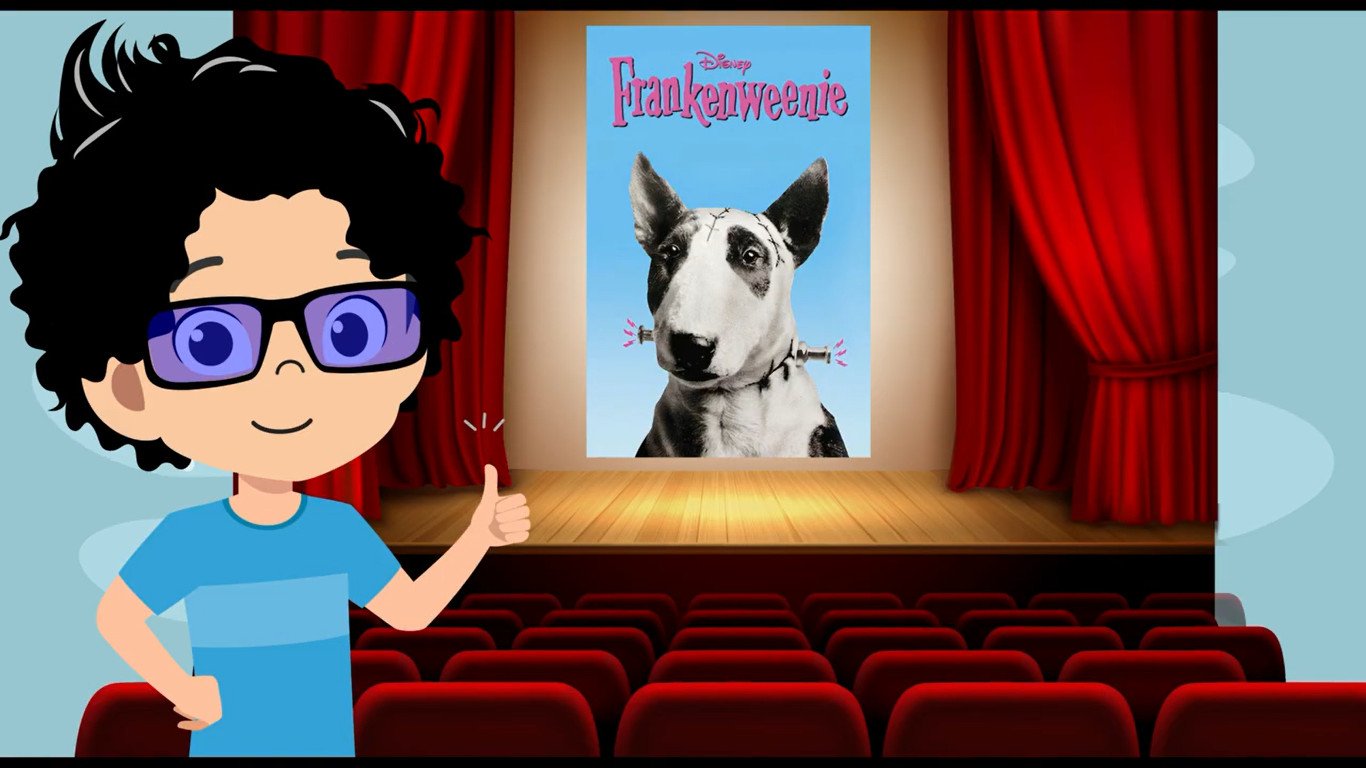
While working for Disney, Burton made a short pic, Frankenweenie, that was released in 1984. It tells the story of a immature boy who tries to revive his dog after it is run over by a auto. Filmed in black-and-white. After Frankenweenie was completed, Disney fired Burton, nether the pretext of him spending the company'due south resources on a film that would be as well dark and scary for children to run across.
Filmography
After leaving Disney he directed films and started to achieve success. He is known for his gothic fantasy films such as Beetlejuice, Edward Scissorhands, and Sweeny Todd. Burton also directed the superhero films such as Batman and Batman Returns, the sci-fi film Planet of the Apes, the fantasy-drama Big Fish, the musical gamble picture Charlie and the Chocolate Manufactory, and the fantasy films Alice in Wonderland and Miss Peregrine's Dwelling for Peculiar Children. Burton besides directed a alive-activeness adaptation of Dumbo.
However, he is about known for his management of stop-motion animations such as James and the Giant Peach, Corpse Bride, Frankenweenie and The Nightmare before Christmas.
Yeah, in 2012 he decided to remake the brusque movie Disney originally fired him for. He created a feature-length stop motility film based on a retention he had as a kid and his human relationship with his dog. This time Tim Burton was a celebrated director and known for making box office hits, and so Walt Disney Pictures funded and distributed the picture.
Current projects
Currently, Tim Burton is working on his first television serial for Netflix. The serial is called Wednesday and is based on the character from The Addams Family.
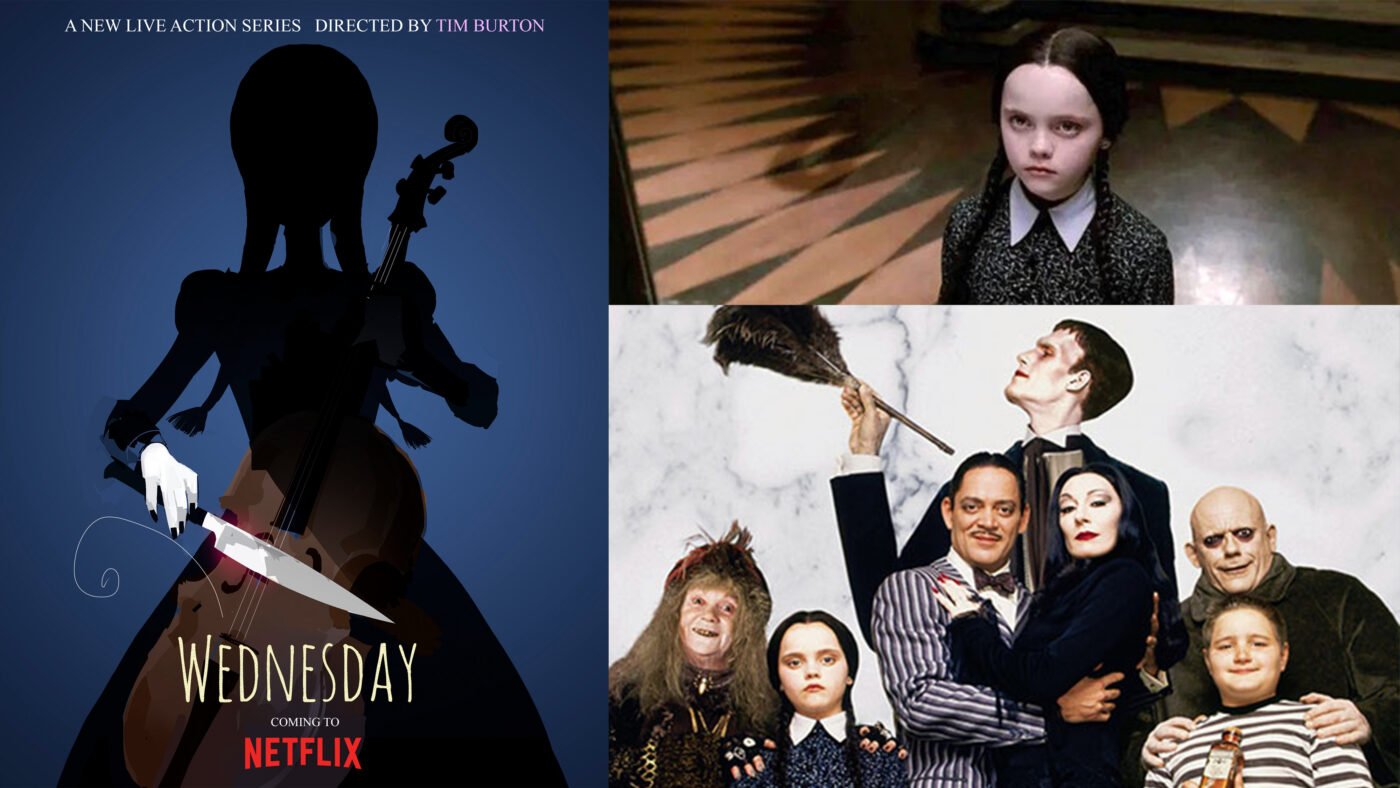
Books
Burton has also written and published diverse books and poems.
Exhibitions
Burton exhibits his artworks and illustrations in museums worldwide. In 2009 Burton had a retrospective exhibition at the MoMA in New York. A retrospective is when an accomplished artist is celebrated past a gallery for his or her accomplishment over a few decades spanning over their entire career. The exhibition consisted of over 700 drawings, paintings, photographs, storyboards, moving-image works, puppets, costumes and many items from the filmmaker's personal drove.
The exhibition travelled to Melbourne Australia, Paris in French republic. He has besides exhibited in Seoul in South korea, in Prague, Czech republic, in São Paulo, Brazil and in Hong Kong.

Let's motion on to analysing Tim Burton's iconic illustration style.
Tim Burton's Art Mode
Character design
When you compare a Tim Burton character to a realistic portrait y'all volition discover some major differences. Tim Burton'due south fine art is not realistic but stylized. The eyes are exaggerated and are the master feature of the head. The iris lacks detail and only consists of piddling blackness dots. The bodies are skinny and elongated. This dissimilarity is exaggerated with large heads placed in thin long necks. Typically Tim Burton Characters have pocket-size noses and tiny mouths.
Use of colour
Tim Burton's art shares an overall commonage feeling. The consistency over all his projects is the style he uses color. He favours a dark muted colour palette, known as desaturated colours. This colour scheme lends itself to his notorious gothic feeling. Overall he favours greys and blues. The colours Burton uses look stake in comparison to typical shades and may accept a greyish tint.
Shape linguistic communication
Shape Linguistic communication is a concept used in art and animation to communicate meaning based on shapes we are familiar with. When used in character, object, and background design, shapes tin can tell a story, bear witness personality, and elicit an emotional response in the viewer without using any words. When you wait at these elementary shapes, what practise you feel?
Circles are usually seen as soft, squishy, harmless, approachable and changeable. Squares are seen as solid, sturdy, strong, supportive, reliable and inflexible. Triangles are sharp, directional, dynamic, unsafe, evil and unpredictable.
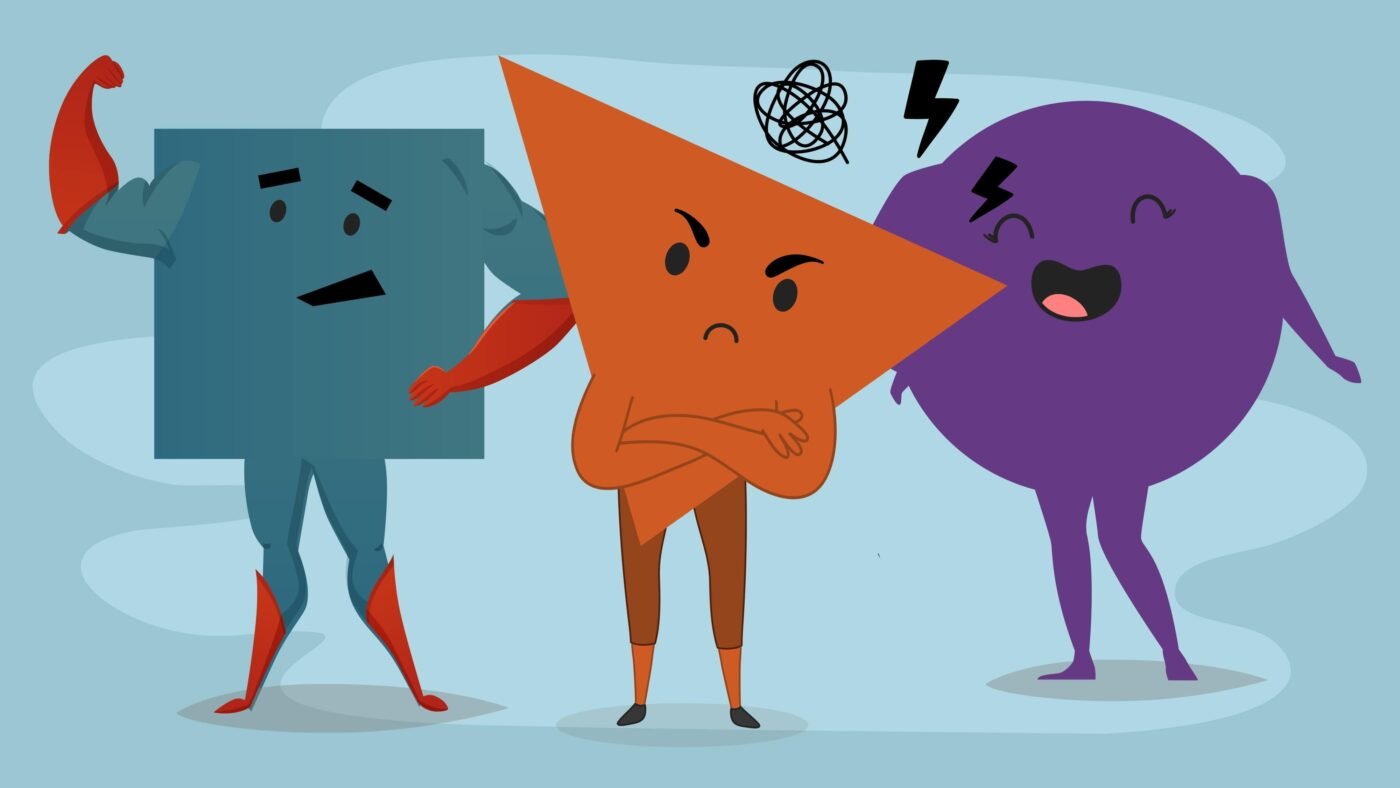
Tim Burton often combines two of these shape languages to create his characters, circles and triangles. The fine balance between these two shapes gives his characters that approachable yet scary advent.
Line Quality
Burton besides uses wonky lines and scratchy marks to add shading. This adds to the dramatic scary appearance of the worlds and characters he creates. You will also observe some curves are greatly exaggerated to add movement and dynamic compositions to the landscapes.
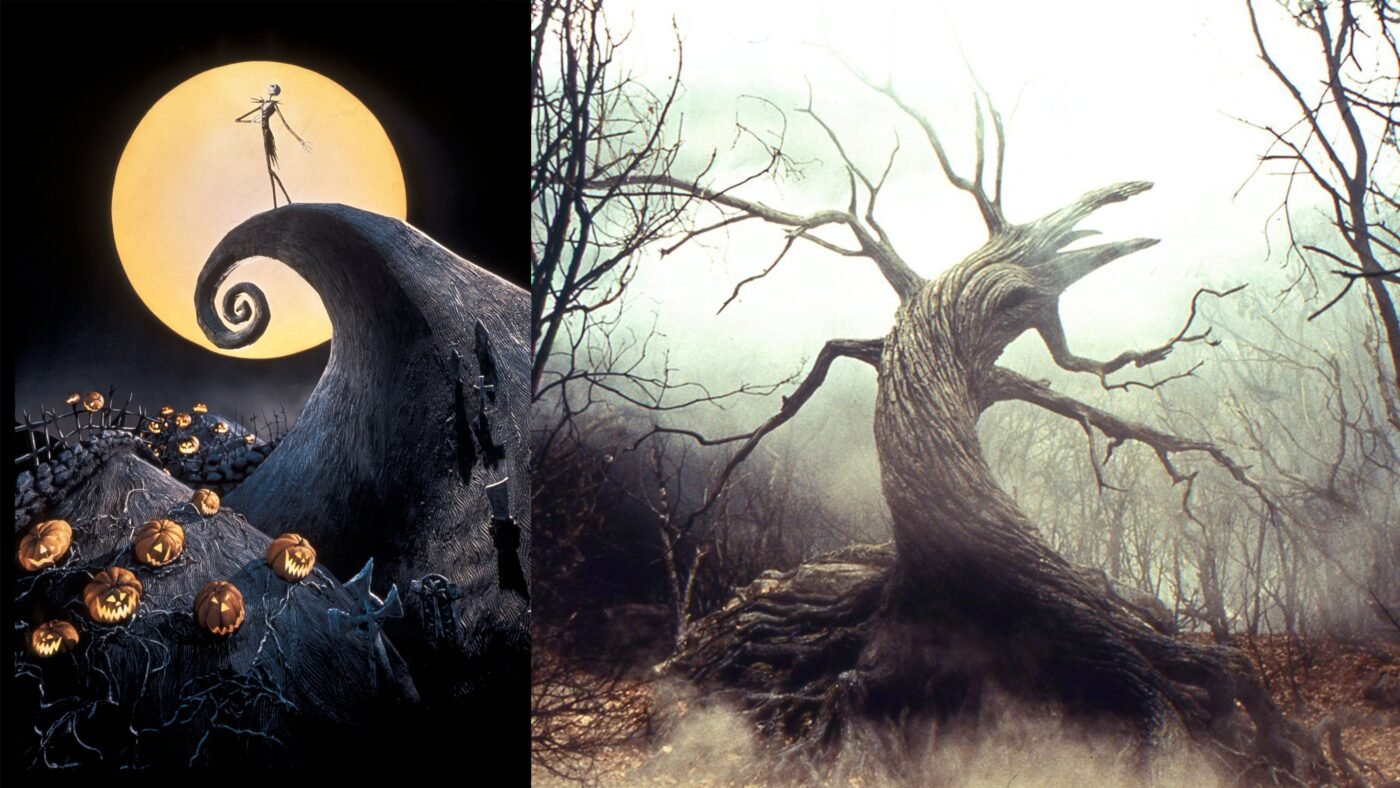
Cracking, now that you know more near Tim Burton's biography and manner permit'south offset working on our art projects. You can purchase an awesome Tim Burton inspired worksheet from our website or our Teacher's Pay Teachers store.
Other characteristics
Other features that are quite noticeable in Tim Burton'south piece of work are pale white skin with nighttime eyes. Crazy hairstyles, some messy and some overly styled, stitches, diverse characters have stitches and marks on their bodies and so the gothic clothing and costumes he is known for. Characters ofttimes vesture top hats and Victorian-inspired dresses and suites. Tim Burton is besides fond of cursing stripes in his costume designs.
Worksheets & Art Project
How to draw a self-portrait Tim Burton Style.
Step 1: Setup your station and art supplies
- worksheets
- pencil
- eraser
- fine liner
- coloured pencils (optional)
- photo of yourself
For this project, you will need our crawly worksheets, pencil, eraser, fine liner, black koki and coloured pencils, if you would similar to add color. It volition also be helpful to take a photograph of yourself or to exist seated close to a mirror. Optional extras would exist coloured toned newspaper and a white pencil.
Find a nice comfortable place to work with good lighting. For this video, I will be drawing myself and some of my close family members. I will be using this image of myself. I will be wearing the aforementioned hair and clothes while calculation some Tim Burton inspired characteristics and style elements.
Pro Tip: Don't press too hard in the offset.
A pro tip before you showtime drawing. Press lightly with your pencil in the outset. Glide over the folio similar an ice skater and exercise not stomp around like an elephant. If you printing lightly information technology is easy to erase mistakes and change your drawing.
Footstep 2: Start with Basic Shapes
Start with the basic shapes and the median line. The Median line is the line that runs down the confront in the center. It helps y'all to place all the elements of the face. Kickoff with a big circle. Notice that I am not drawing with one continuous line, I am building my circle with pocket-size quick lines. I am also working with the natural curve in my hand and not against it.
Now add together the median line. Keep going until you lot reach the point where y'all would like the chin. Now we are going to add a triangle for the mentum. Erase the circle line that you no longer need.
Moving on to the torso we tin can add a sparse elongated neck and shoulders. The shoulders are rounded to match the circle shape language. At present you are done with the overall placement of your graphic symbol.
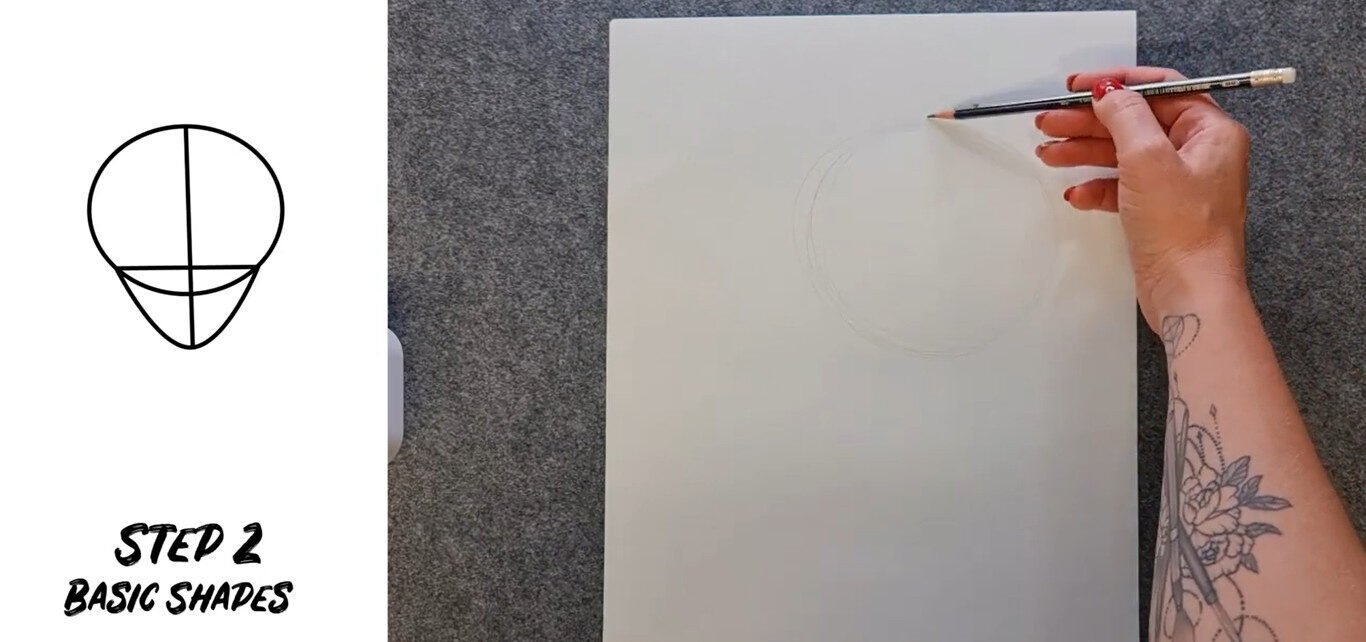
Footstep iii: Add the facial features
Erase the lesser function of the circle you no longer need. Lightly place the eyes in the head. The eyes are huge and remind me of ping pong assurance. Make sure your eyes are symmetrical and the aforementioned size.
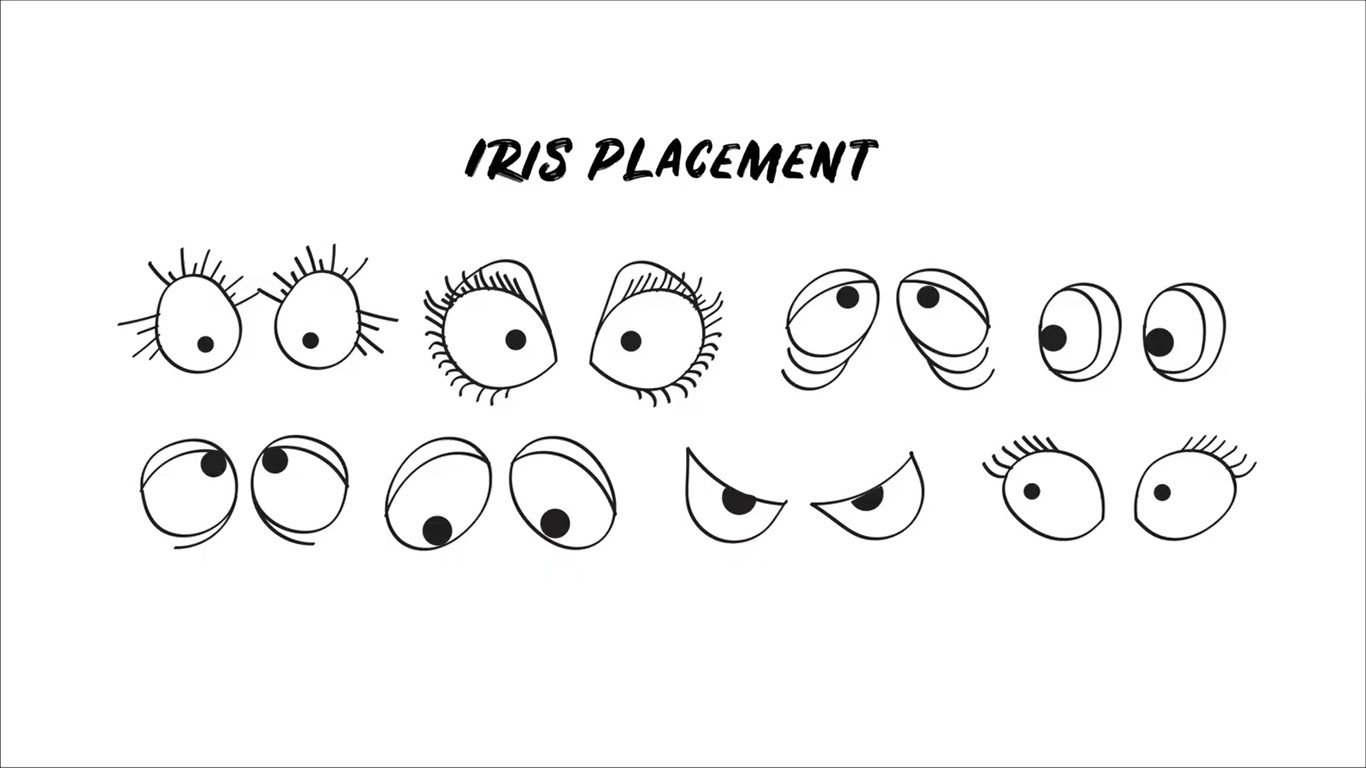
The pupils lack details and are but a tiny black dot. If yous would similar your character to look directly at you, place the pupil in the heart. If you would similar their gaze to become off into the distance, place it slightly to the left or correct. If you would like them to look up, place the iris to the meridian of the eyeball.
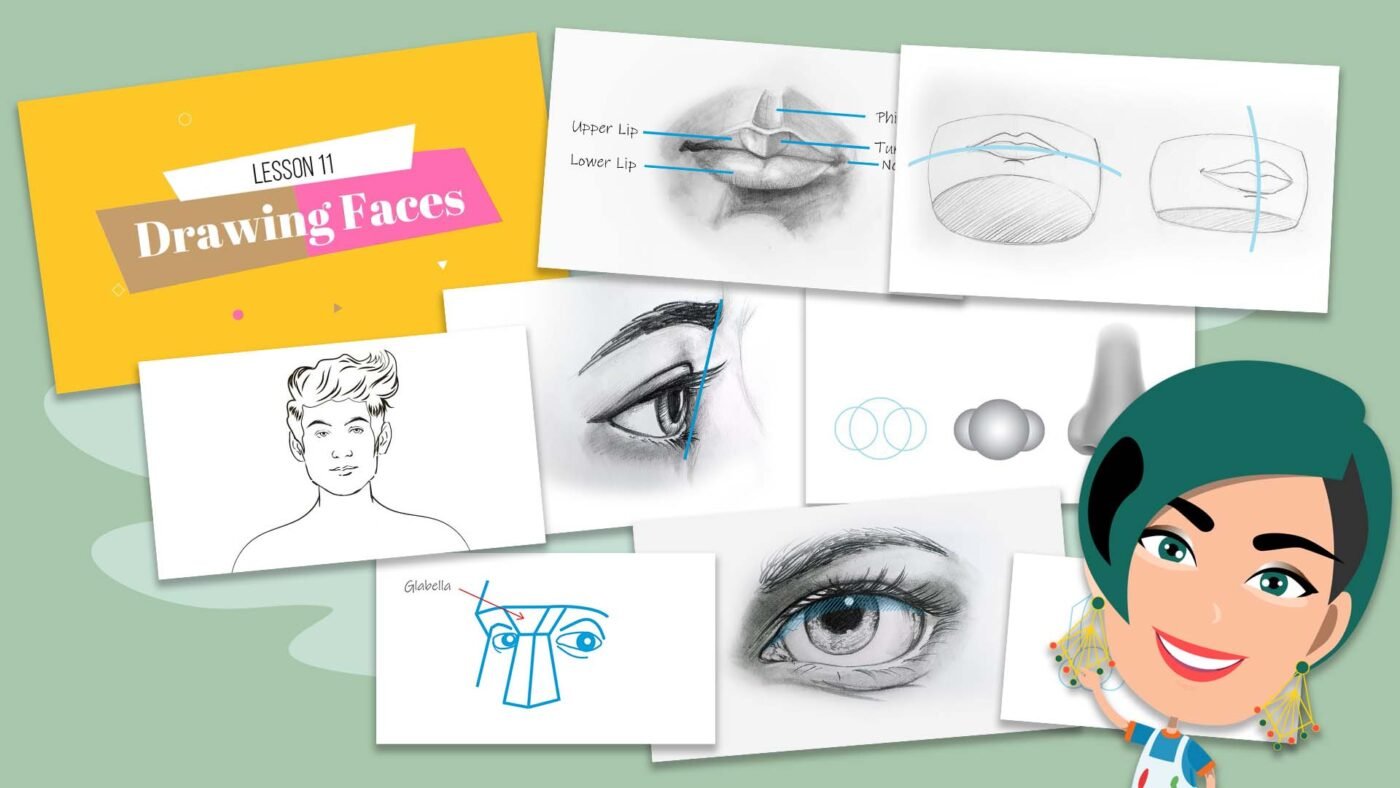
Add guidelines for the nose and mouth placement. Remember these proportions are not realistic, they are stylised. If y'all would like to learn how to describe realistic portraits you can lookout my videos about drawing faces. Click the link on the screen. Tim Burton's character's features are exaggerated which ends up looking like a combination between fun and spooky.
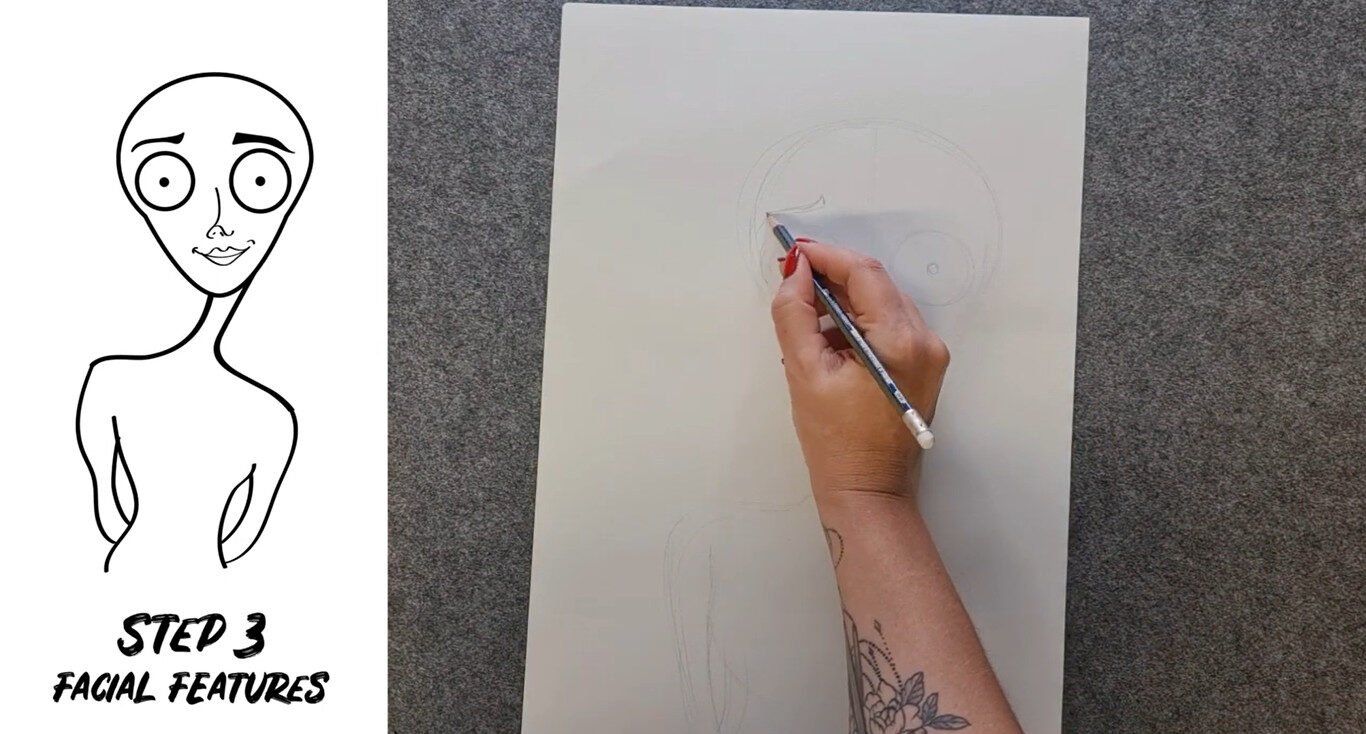
Now let'due south add the nose. Think Tim Burton's noses are mostly small and understated specially for his primary characters. At that place are some exceptions such as the Penguin in Batman and other supporting characters where the noses are massive. In the worksheets, I take included different features you can use in your portrait but for this portrait, I'm just going to draw a tiny simple nose.
Now let's place the mouth. I am not going to add a massive oral cavity that covers the face up. Information technology will exist a tiny mouth. Most of Tim Burton'due south male characters have very slim upper lips and y'all can only see the bottom lip. When creating a female character y'all can brand the height lip a little bit bigger to emphasise the lipstick and femininity. Add a little heart on the top lip to help you achieve the desired shape.

Great, we have placed most of the facial features by now. To add more emotion and facial expression to your character add eyebrows. Yous can brand these every bit thin or every bit thick as you lot want or you could give your character really bushy brows. Draw a curved line above each middle for the countenance. Now add some line quality by making them thinner and thicker at places or add texture if needed.
Now permit's add the ears. The ears are tiny and simplified. In my lesson on how to draw realistic ears, I teach the 9Y-method. This is always helpful for getting the construction of the ear. Draw the 9 of the ears on both sides of the face. Ensure they are placed at the exact same top and are the same size. Now add together the inner y. And wa la! Yous take ears.
Footstep 4: Add pilus
Time for your character's hair. Outset, break your pilus downward into basic organic shapes. At present analyse the direction of your hair. In which direction is each section flowing. Avoid helmet hair where the hairs sit apartment on the skull. The hair sits on and around the skull and has volume. Hair is dynamic and has a life of its own. Sometimes it tin be unruly. For extra graphic symbol add lots of strands continuing up or flowing over the forehead. If your character is shocked the hair might be crazy and standing in all directions.
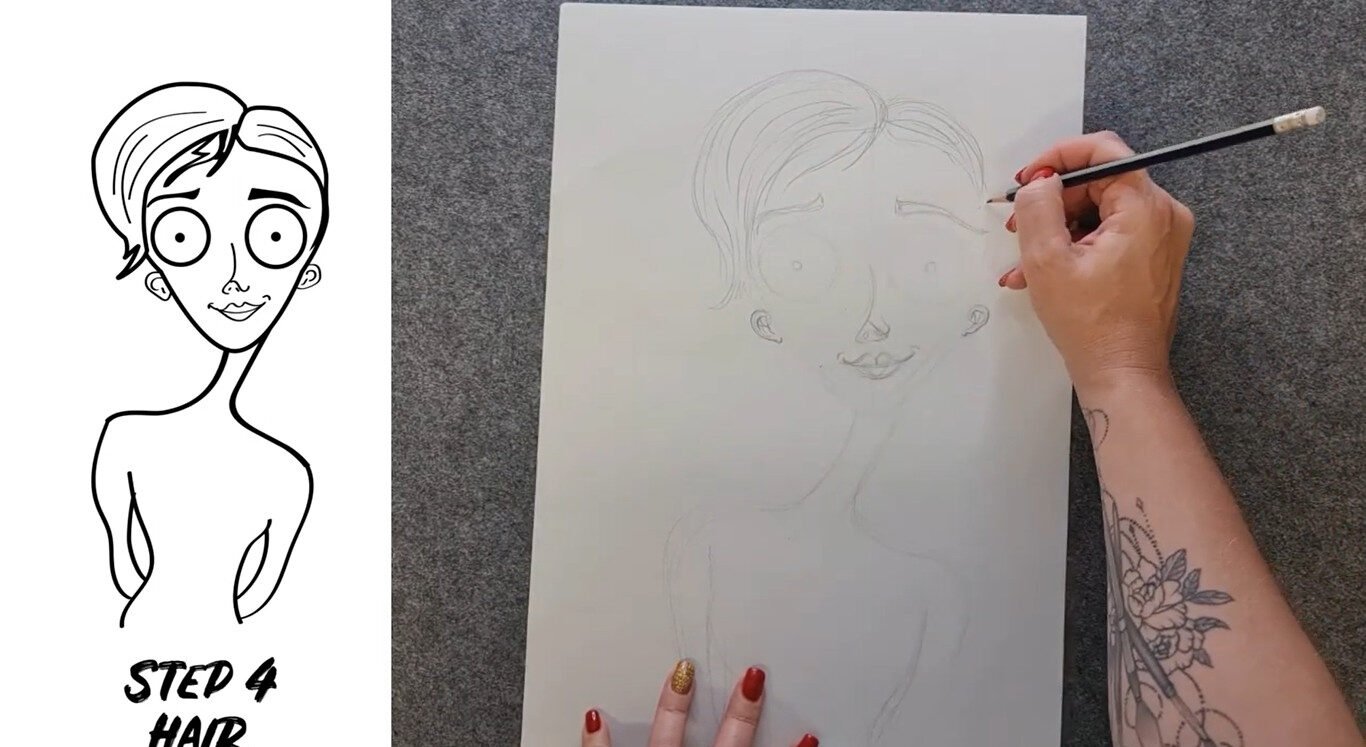
Step 5: Add clothing & accessories
Now let's add wearable. You can be inspired by the clothes y'all are wearing in your self-portrait photo or the clothes you are drawing today. I am going to add a typical Tim Burton style off the shoulder wearing apparel to my grapheme. At present we tin can add some fun accessories. On the worksheet, I have illustrated a few accessories to inspire you. You lot can add earrings, a chapeau, lace patterns, a neckband, tie, choker, bracelets, necklaces, glasses or a monocle.

Step half-dozen: Add together details
Now we can add together all the tiny details. You can brand your character more feminine by adding eyelashes. You tin can add make up such as adding eyeliner. If you lot accept an off the shoulder dress yous can add the collar bone. You can even add stitching to make your grapheme a bit scarier.
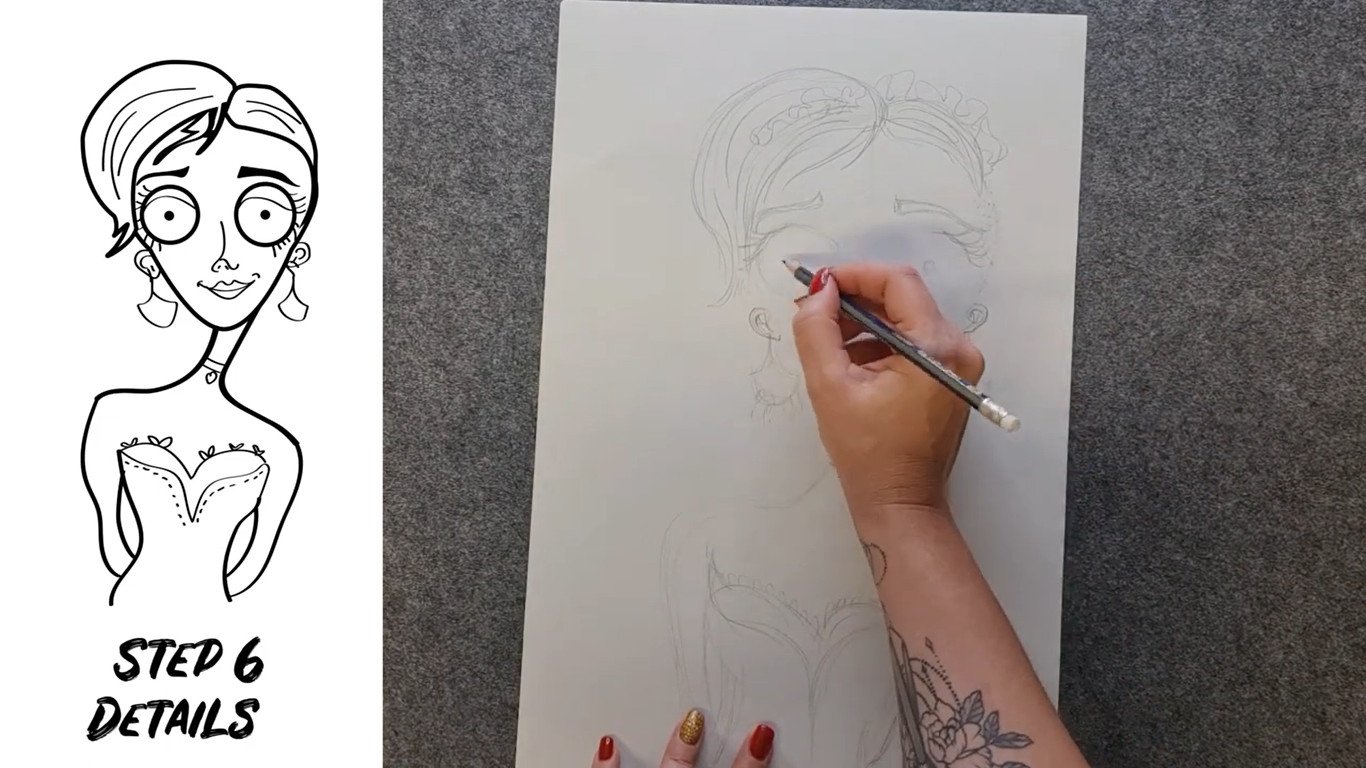
Footstep 7: Add shading
Y'all can brand your graphic symbol await more 3D by adding shading. This adds to the stop motion puppet look that Tim Burton is known for. Information technology is important to add shadows beneath the chin and below the nose. Tim Burton characters besides typically have shading under their eyes. With shading, you can besides make the cheekbones a niggling more pronounced. Lastly, shade the clothing.
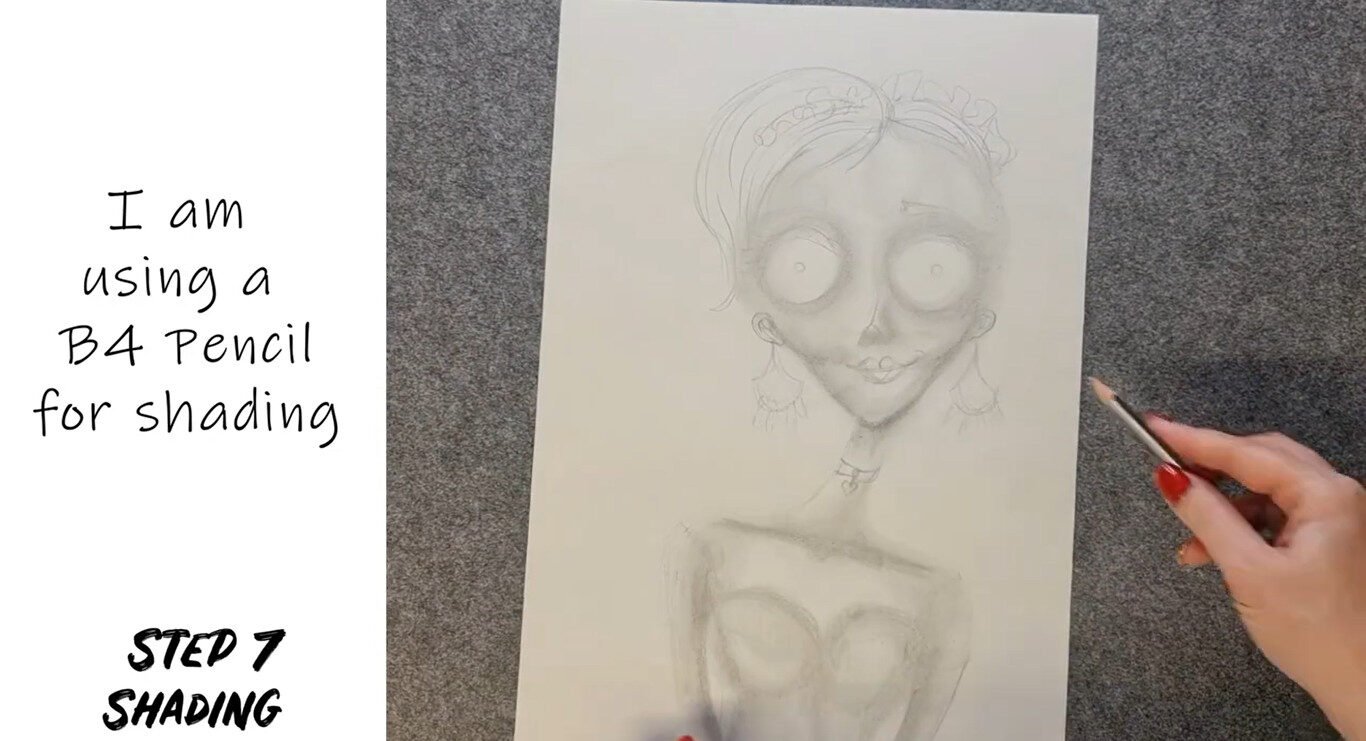
Stride viii: Outlines
Use your fineliner, sharpie or koki's to add outlines and details.

Step ix: Optional to add colour.
You can now add together a scrap of colour to your portrait. This is completely optional. So if you dear the monochrome look why not keep information technology. If you want to add color remember to employ the muted colour pallet that Tim Burton uses. Practise not overwork the color so all the beautiful shading you accept created disappears. Yous can as well blend the colours together for an added 3D effect.

Well done your Tim Burton inspired cocky-portrait is now complete! Stay tuned for a bonus time lapse at the end of the video where I describe my other family members in the same style.
We're washed!
And that'south information technology for our Tim Burton inspired art lesson. I hope you enjoyed this lesson and learnt more about Tim Burton'southward specific style.
If you lot're new to our channel please click subscribe and then you can be notified whenever we have a new video. Call up to store our worksheets online on our website or our TeachersPayTeachers shop. Nosotros as well take loads of freebies for you to download in that location.
I am creative person Lillian Gray, until side by side fourth dimension.

Delight visit our blog for many more fun art projects.
Source: https://lilliangray.co.za/tim-burton-stylized-animation-portrait/














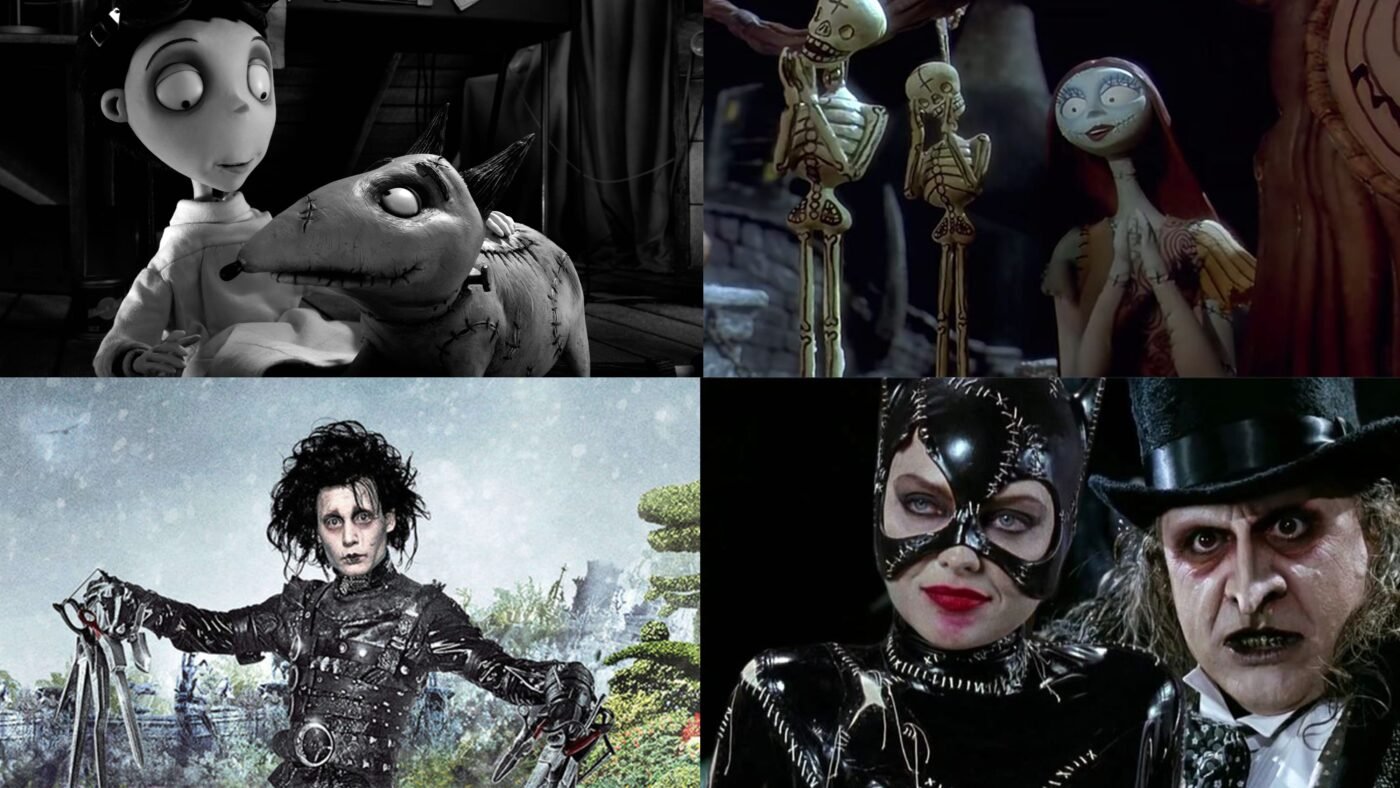
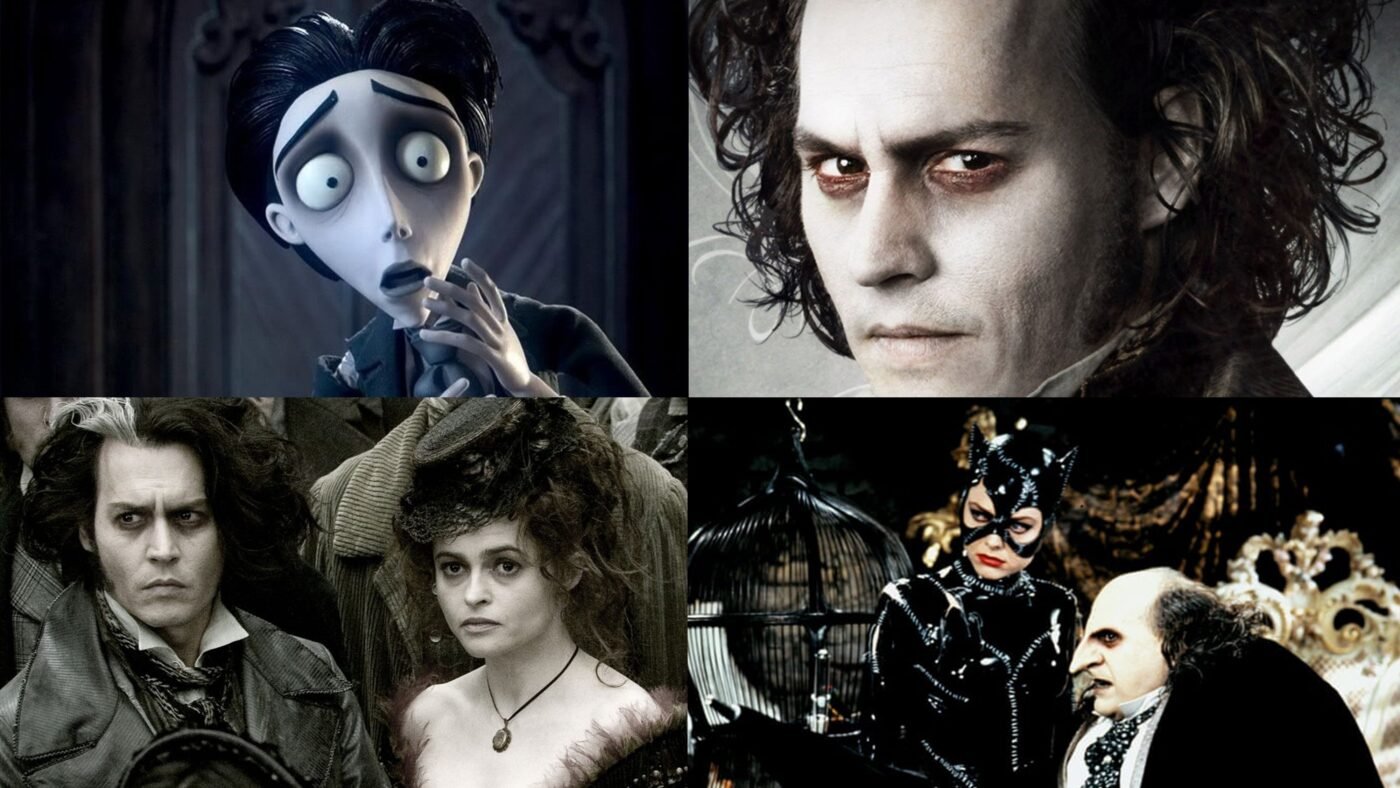

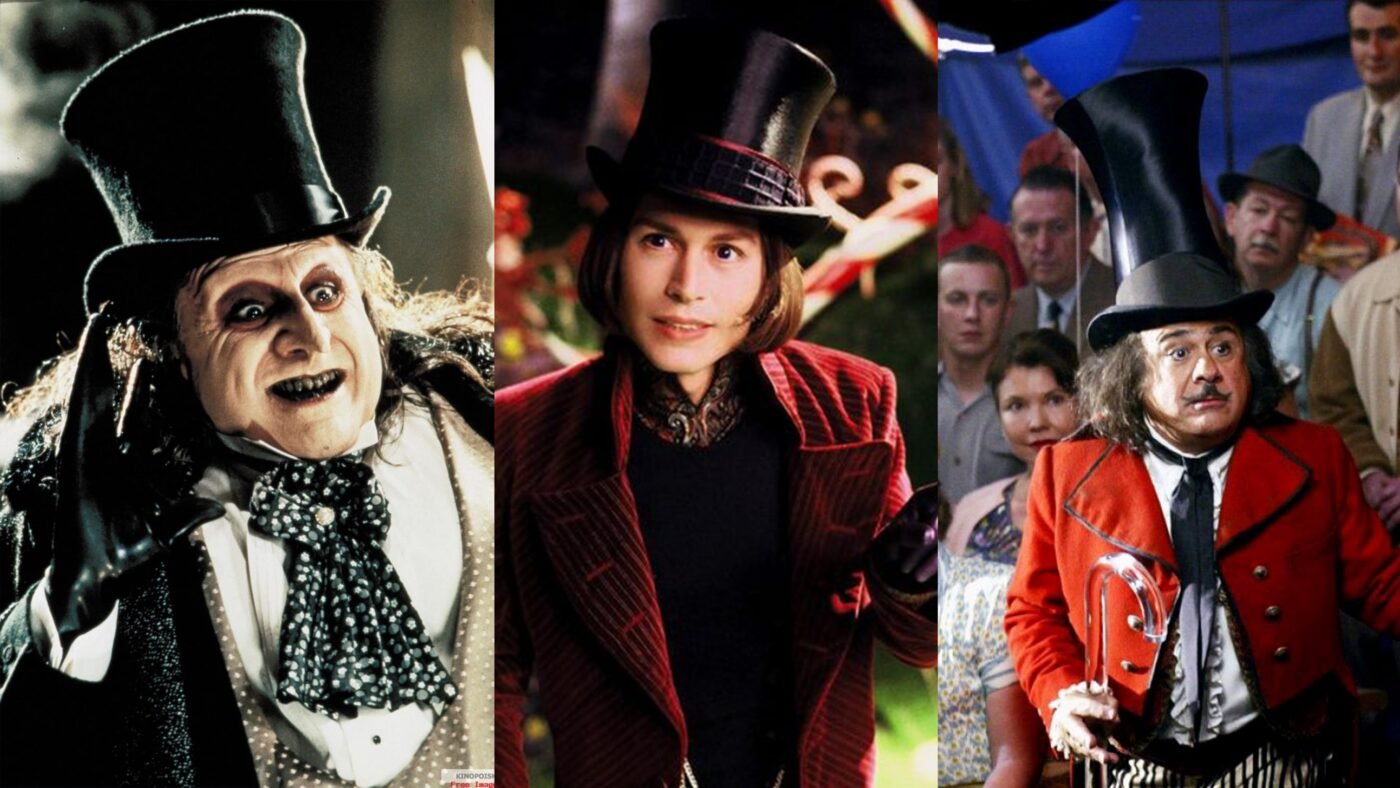
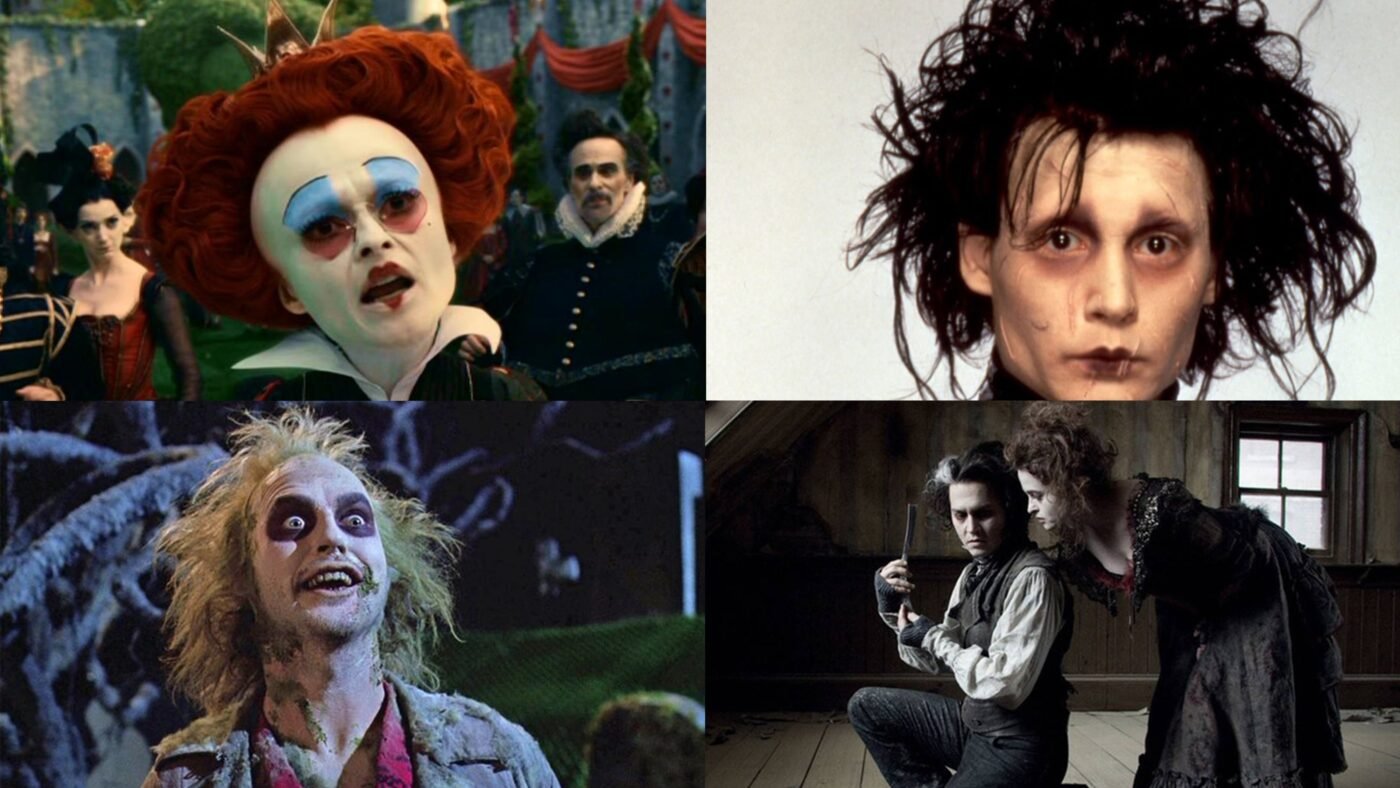


0 Response to "How To Draw Tim Burton Style"
Post a Comment